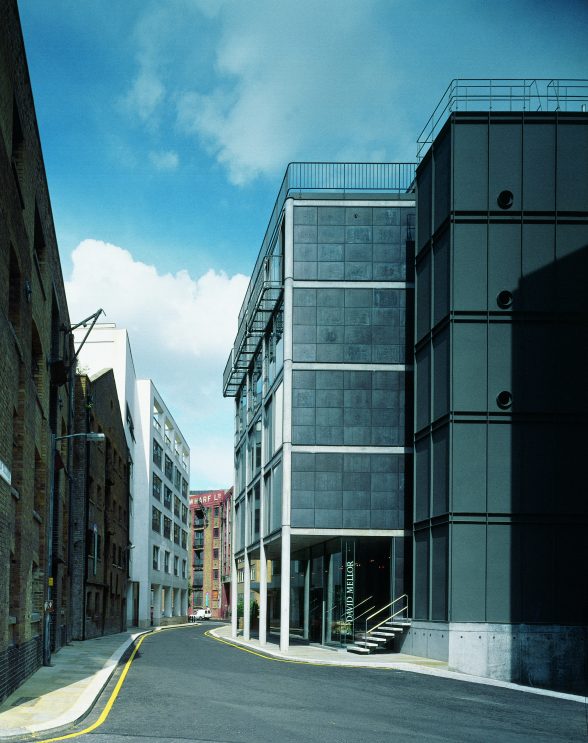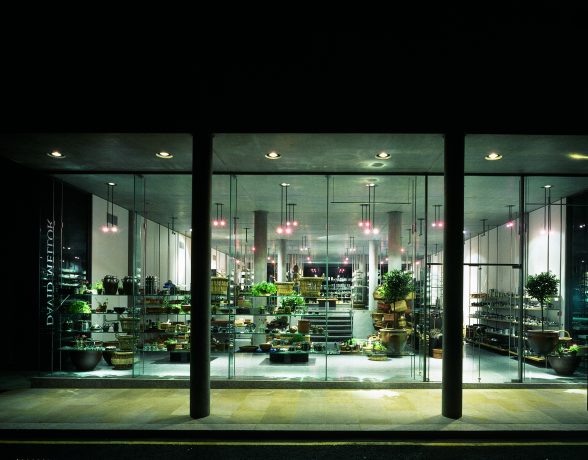This website uses cookies
This website uses cookies to enable it to function properly and to analyse how the website is used. Please click 'Close' to accept and continue using the website.



Photo: Peter Cook/VIEW
The Twentieth Century Society has moved to safeguard the high-tech Shad Thames building near Tower Bridge in London, designed by award winning architects Michael Hopkins & Partners for the leading silversmith and designer David Mellor.
The Society submitted a listing application for the building, which in the 1990s became part of the Terence Conran empire, following concerns over its future. An application is under consideration for the construction of a three-storey rooftop extension and side and rear extensions. C20 has lodged strong objections claiming it “would cause substantial harm to an architecturally and historically significant building.”
C20 Society caseworker Coco Whittaker said: “It should be listed as a major work by a renowned architectural practice and for its association with two of the twentieth century’s most significant designers, Mellor and Conran. It should also be listed as an important exemplar of High-Tech architecture which combines high quality precision plate glass, steel and lead with fine hand finished concrete.”
Patty Hopkins commented: “This building occupies a very special place in our oeuvre. David Mellor was a good friend. He was a returning client, as we had already completed the Round Building, his factory in Hathersage, Derbyshire, I remember that we had recently visited Louis Kahn’s Yale Centre for British Art, which was definitely an influence.
“22 Shad Thames is a fitting memorial to David, who oversaw the building process with his own workforce and applied the same degree of care to the hand sanding of the internal concrete columns, as he did to burnishing his beautiful cutlery.”
22 Shad Thames was built between 1989 and 1991 as part of the regeneration of the Docklands. It was designed to accommodate a variety of uses for David Mellor: a workshop (later showroom) on the ground floor, three floors of offices and a two storey apartment on the top floor for the Mellor family

Photo: Peter Cook/VIEW
It was constructed from an in-situ concrete frame, composed of flat floor slabs supported on a grid of columns. Concrete columns were poured into steel formwork to produce a fair-faced finish, and floor slabs were formed in resin-faced plywood to make them as smooth as possible. The concrete mouldings were created for the project by Mellor and staff, and concrete pieces were hand finished with sandpaper, reportedly involving the use of 800 sheets. This appears to have been inspired by the work of the Japanese minimalist, Tadao Ando. The contractors, Sir Robert McAlpine, had worked on the National Theatre (1969-76) with Sir Denys Lasdun, a building noted for the quality of its concrete work. The front and back walls are fully glazed. The showroom is fitted with plate glass walls, and offices have full-height windows in aluminium frames, as do apartment floors but with the addition of steel balconies.
In the 1990s, Sir Terence Conran became the new occupier, opening The Conran Shop Contracts, a new department of the Conran Shop, geared towards architects and designers.
22 Shad Thames was built at the same time as the neighbouring 20 Shad Thames by Conran Roche. Conran and Hopkins collaborated over the general massing of their buildings and deliberately left a space between them to provide views of the dock from the road. This would disappear with the new development, designed by architects Squire and Partners.
It’s planned to turn the building into offices with a retail unit on the ground floor. Their proposal also includes adding sections of green wall to the side extension and brightly coloured artwork to the concrete plinth as well as well as glazed ‘winter garden’ pods and Juliet balconies.
Shad Thames was an industrial centre in the Victorian period, home to many wharfs, warehouses, mills and factories. 22 Shad Thames is in the St. Saviour’s Dock Conservation area and stands opposite the Grade II listed Anise Warehouse (15 Shad Thames) of c.1813, and to the south of the building is a row of Grade II listed wharfs and warehouses built in the mid to late 19th century. The Grade II listed Butler’s Wharf Building (36 Shad Thames) was built on the riverfront (north-west of the site) between 1871 and 1973.

Become a C20 member today and help save our modern design heritage.